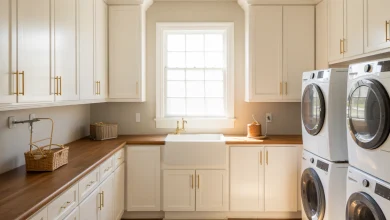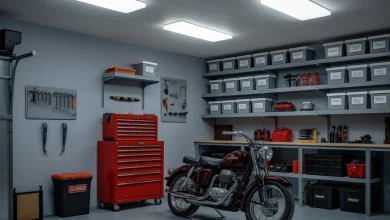Heating Maintenance: The Key to a Warm and Efficient Home
As the colder months approach, ensuring that your home’s heating system is in top condition is crucial for maintaining comfort and energy efficiency. Regular heating maintenance is the best way to prevent unexpected breakdowns, extend the life of your heating equipment, and keep your energy bills under control. In this guide, we’ll explore the benefits of heating maintenance, what it involves, and how to find a reliable service provider to keep your system running smoothly all winter long.
The Benefits of Regular Heating Maintenance
Scheduling regular maintenance for your heating system offers several advantages:
- Improved Energy Efficiency: Regular maintenance helps your heating system run more efficiently by ensuring all components are clean and functioning correctly. This can lead to lower energy consumption and reduced utility bills.
- Prolonged System Lifespan: Routine inspections and tune-ups can identify and address minor issues before they become major problems, helping to extend the life of your heating system.
- Reduced Risk of Breakdowns: Preventive maintenance reduces the likelihood of unexpected breakdowns by catching potential issues early, saving you from costly emergency repairs.
- Enhanced Home Comfort: A well-maintained heating system provides consistent and reliable warmth throughout your home, ensuring a comfortable environment during the winter months.
- Improved Air Quality: Maintenance includes cleaning or replacing air filters, which helps to reduce dust, allergens, and other particles in your home’s air, promoting better indoor air quality.
- Safety Assurance: Regular maintenance checks ensure that your heating system is operating safely, reducing the risk of carbon monoxide leaks or other hazards.
What Does Heating Maintenance Involve?
Heating maintenance typically includes a comprehensive inspection and tune-up of your system to ensure it operates efficiently and safely. Here are the key steps involved:
- Inspection of System Components: A technician will inspect all major components, including the furnace or boiler, heat exchanger, blower motor, burners, ignition system, and thermostat, to identify any signs of wear or damage.
- Cleaning and Lubrication: Dust, dirt, and debris are removed from critical components, and moving parts are lubricated to reduce friction and wear, ensuring smooth operation.
- Filter Replacement: Dirty air filters are replaced to improve airflow and efficiency, as well as to enhance indoor air quality.
- Testing Safety Controls: Safety controls, such as the limit switch and carbon monoxide detectors, are tested to ensure they are functioning correctly, protecting your home from potential hazards.
- Checking Thermostat Settings: The technician will check and calibrate the thermostat to ensure accurate temperature control and efficient system operation.
- Inspecting Ductwork: Ducts are checked for leaks or obstructions that could affect airflow and reduce system efficiency.
- Performance Testing: The technician will test the system’s performance, including checking for proper airflow, measuring temperature differentials, and ensuring efficient combustion (for gas furnaces).
How Often Should You Schedule Heating Maintenance?
It is generally recommended to schedule heating maintenance at least once a year, preferably in the fall before the heating season begins. This timing ensures that your system is ready to operate efficiently throughout the winter. For homes with older heating systems or those in regions with particularly harsh winters, more frequent maintenance may be advisable.
Choosing a Heating Maintenance Service Provider
Selecting a reputable service provider is key to ensuring effective heating maintenance. Here are some tips to help you find the right provider:
- Look for Experience and Expertise: Choose a provider with extensive experience in maintaining heating systems similar to yours. Verify that their technicians are licensed, insured, and certified by reputable organizations such as NATE (North American Technician Excellence).
- Read Customer Reviews: Check online reviews and testimonials from previous customers to gauge the provider’s reliability and quality of service. Positive feedback indicates a trustworthy company.
- Ask About Maintenance Plans: Many HVAC companies offer maintenance plans that provide regular inspections and tune-ups at a discounted rate. These plans can help ensure consistent care for your heating system.
- Request References: Ask the provider for references from satisfied customers to get a sense of their track record and customer satisfaction.
- Get a Written Estimate: Ensure you receive a written estimate that outlines the services included in the maintenance visit and any potential additional costs. This transparency helps avoid surprises later on.
Conclusion
Regular heating maintenance is essential for keeping your home warm, comfortable, and energy-efficient throughout the colder months. By scheduling annual inspections and tune-ups, you can extend the life of your heating system, reduce the risk of unexpected breakdowns, and maintain a safe and healthy indoor environment. Remember to choose a reliable service provider to ensure your heating system receives the care it needs to perform at its best.




